Recently I pointed out that you should almost NEVER unload your self-defense handgun for two major reasons:
1.) A loaded gun is not necessarily more safe than an unloaded gun and
2.) Because constantly loading and unloading the same cartridge into your handgun can cause a number of problems that can totally ruin your ammo.
At best, you’ll have no problems.
At worst, your ammo either will “click” instead of “bang” when you need it to save your life … OR … your gun will blow up in your face.
In short, the best course of action is to never rechamber–or set a hard and fast rule like no more than twice–the same ammo in your handgun to avoid dying if you ever need your handgun to save your life (or having it blow up in your face).
After I posted that article, I had a few comments and one of them pointed out that the same is even MORE true for the AR-15 and it’s so important we’ll talk about that today.
The Two BIG Problems With Constantly Unloading And Reloading The Same Ammo
To recap, there are two main problems with unloading and reloading the same ammunition multiple times.
1.) Bullet Setback.
Each and every time a magazine-fed firearm feeds cartridges into the chamber, the bullet is being violently whacked as it is chambered.
The loading cycle causes the top round to be stripped from the magazine and slammed tip-of-the-bullet-first into the feed ramp before being deflected up and into the chamber.
The first time it’s done is usually not a problem with good ammo. But repeated chambering of the same cartridge can force the bullet slightly backward into the case mouth of the brass.
It’s simple physics that as the bullet is pushed further back into the brass casing, there is less volume of space in the case containing the powder, which multiplies the pressure that will be generated when the cartridge fires.
The picture below is a random one I found on the internet. It’s an example of how repeatedly chambering the same self-defense hollowpoint round caused bullet setback:

While this is not as common in rifle cartridges, such as the AR-15, it can happen as well. Standard military AR15 ammo was designed with a cannelure and the casing is supposed to be “crimped”, both of which should help protect against this. But, of course, not every round is perfect and it can happen as you can see in the picture below (as I understand it, this round caused a stoppage in the AR15, so thankfully it did not fire. If it had, it looks like it would of been dangerously over pressured):

2.) Primer Damage.
In the article I shared on not reloading handgun carry ammo, the finding of the ammo manufacturer said, ” … the cause of the misfire was determined to be from the primer mix being knocked out of the primer when the round was cycled through the firearm multiple times.”
So repeatedly chambering the same round in your handguns can ruin the primer mix and cause the round to misfire.
But it’s even more important in the AR-15.
The AR-15 With Its Floating Firing Pin Actually Taps The Primer Every Time You Load It
As commenter Franky2Shoes pointed out in my other post, “On AR’s it’s a bigger issue due to the free floating firing pin that literally taps the primer upon chambering” and that’s absolutely correct.
DocGKR, who I’ve referenced before as a terminal ballistics and ammunition expert writes this:
“A large SWAT team in this area had a failure to fire from an M4 with Hornady TAP ammo during an entry–fortunately no officers were hurt and the suspect immediately threw down his weapon when the carbine went click instead of bang. After the incident was concluded, the team went to the range and expended the rest of their carbine ammo and had one additional failure to fire. This same team had 3 Hornady TAP rounds fail to fire in training a couple of years ago. When Pat Rogers was teaching a class at a nearby agency, there were 5 failures to fire using Hornady TAP ammo. In all 10 cases, there appeared to be good primer strikes, but no rounds fired. On analysis, the ammunition had powder and checked out otherwise.”
“However, despite what appeared to be good primer strikes, two problems were discovered. First, when accurately measured, some of the primer strikes had insufficient firing pin indentations. The failed round from the potential OIS incident had a primer strike of only .013″—the minimum firing pin indent for ignition is .017”. In addition, the primers on the other rounds were discovered to have been damaged from repeated chambering. When the same cartridge is repeatedly chambered in the AR15, the floating firing pin lightly taps the primer; with repeated taps, the primer compound gets crushed, resulting in inadequate ignition characteristics–despite what appears to be a normal firing pin impression. Once a round has been chambered, DO NOT RE-CHAMBER IT for duty use. Do NOT re-chamber it again, except for training. This is CRITICAL!!!“
US Soldiers Have Almost Been Killed Because They Re-Chambered The Same Rounds
It’s common (and infuriating) knowledge that soldiers are not allowed to have loaded weapons on their bases. As far as I know this is the same even overseas in “war zones”.
Here is a story DocGKR shared on a forum (he said it was copied as written–adult language included–at LF by “03humpalot”):
“I have relayed this story to a few of you before but here it is again. Pay attention to what DocGKR posted above because it could very well save your life.
My first shooting in Iraq i threw my M4A1 on semi and ATTEMPTED to fire a controlled pair (First round functioned striking the threat and the second round did not function) i then transitioned to my secondary (glock 19 shooting ball) and had a failure to fire on my first round. Eek…i was Waaaaaay behind the power curve at this point.
At this point i was contemplating all of my various bad life decisions which had lead me to that point in my life and grabbed an M240B and solved the problem.
I AM VERY LUCKY TO STILL BE UPRIGHT AND BREATHING TODAY….the cause of these malfunctions you ask?
Repeated chamberings of the same ammo.
I made a decision that day that my life was more important than following archaic rules written by those who sit behind desks and started shitcanning rounds after i was forced to clear weapons on U.S. Military installations.
The .gov can fuckin bill me.
Just FYI fellas.”
And, through some digging online, it appears the ARMY issued a “Maintenance Advisory Message” recommending that the same rounds not be repeatedly chambered in 2004 (emphasis mine).
From:AMSTA-CS-CZR
Sent:Monday, November 15, 2004 2:18 PM
(E-mail); Susan Pinson (E-mail); Thomas Wallis (E-mail); Warren Office (E-mail); XO GSIE; Ziegler, Gavin D Mr TACOM-RI
Subject:MAM TACOM FY05-004 Re-chambered Cartridges DTG: 2004/11/15 19:59:05 Z UNCLAS
SUBJECT: Maintenance Advisory Message (MAM) TACOM Control No. MAM-FY05-004, Re-chambered Cartridges Exhibiting Primer Indent for M16A2 Rifle, NSN 1005-01-128-9936, LIN R95035; M16A4 Rifle, NSN 1005-01-383-2872, LIN R97175; M4 Carbine, NSN 1005-01-231-0973, LIN R97234; and M4A1 Carbine, NSN 1005-01-382-0953, LIN C06935
1. References: TM 9-1005-319-10, Operators Manual For M16 Series Rifles and M4 Series Carbines, Dated October 1998
2. Distribution: Note this is a “Maintenance Advisory Message”. MACOM commanders will retransmit this message to all subordinate unit/installation Commanders within 24 hours of receipt of this message and acknowledge receipt of this message within five working days to Safety Office, Tank-automotive and Armament Command-Rock Island (TACOM), ATTN: AMSTA-CS-CZR, Rock Island, IL 61299-7630, e-mail:[email protected].
3. Problem Discussion:
a. Affected Weapons: All 5.56mm M16 Series Rifles and M4 Series Carbines.
b. Reports from units deployed in Iraq indicate troops lock and load 5.56 mm cartridges in M16 rifles and M4 Carbines prior to operations. Upon completion of the operation, weapons are cleared and the loaded cartridge is ejected. The ejected cartridge is then reloaded back in the magazine.
c. Each time a cartridge is chambered in an M16 Series Rifle or M4 Series Carbine, a slight, but noticeable indentation is made on the primer. This is caused by contact of the free-floating firing pin against the cartridge primer as the bolt closes on a chambered round. This is normal operation of the weapon and does not result in any immediate degradation of the weapon and ammunition’s performance. Repeated bolt closures on the same round could make the primer insensitive and potentially cause a misfire.
A misfire is the failure of the cartridge to fire when the trigger is pulled. However, the rechambering of an indented round will NOT cause an accidental discharge. Testing was performed examining repeated chambering of rounds on the M16 Series Rifle and M4 Series Carbine and tests resulted in no accidental discharges of the weapon. Although misfires can occur for numerous reasons including repeatedly chambering of the round, the likelihood of a misfire is remote and easily correctable by immediate action procedures.
4. User Actions:
a. Recommend soldiers rotate their ammunition so they are not chambering the same round repeatedly. This can be easily done in conjunction with the Hot, Dry Climate-Desert procedures per TM 9-1005-319-10, page 0009-00-5. The TM states ammunition and magazines, which have been exposed to dust and sand, should have the magazines unloaded and the ammunition and insides of the magazine wiped clean daily.
b. Cartridges, which have been chambered, are identified by the slight indentation in the cartridge primer. Recommend that repeat chambering of the same cartridge be minimized as discussed above.
The Bottom Line Is, Don’t Re-Chamber “Duty Loads” More Than Once
Whether it’s your AR15 or your handgun, you most likely have “duty loads” aka self-defense ammo and “practice” ammo.
The self-defense ammo is definitely more expensive, so I understand that you may want to “conserve” it as much as possible to save money but the best thing to do is just buy 500-1000 total rounds of your chosen self-defense ammo.
Then every time you have to unload your AR-15 or handgun, simply take that round that was previously in the chamber and throw it in with your practice ammo pile.
It’s that simple.
How much self-defense ammo you need depends on how often you plan to unload your gun. If you unload it once per week, that’s 52 rounds per year that you’ll need, etc.
After you chamber a round once, think of that round as “practice ammo” from now on. Especially if you are using an AR-15.







![Are Compensators Worth It? [Video]](https://preparedgunowners.com/wp-content/uploads/2025/07/Depositphotos_815431992_S-218x150.jpg)




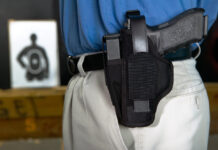
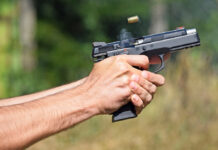
![Would-Be Robber Takes The Tueller Drill Challenge [Video]](https://preparedgunowners.com/wp-content/uploads/2025/10/Depositphotos_50626839_S-218x150.jpg)

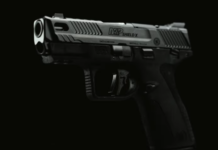
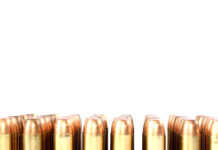
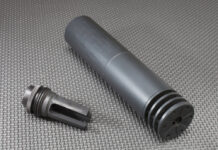
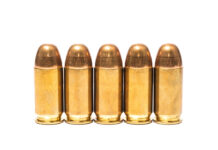
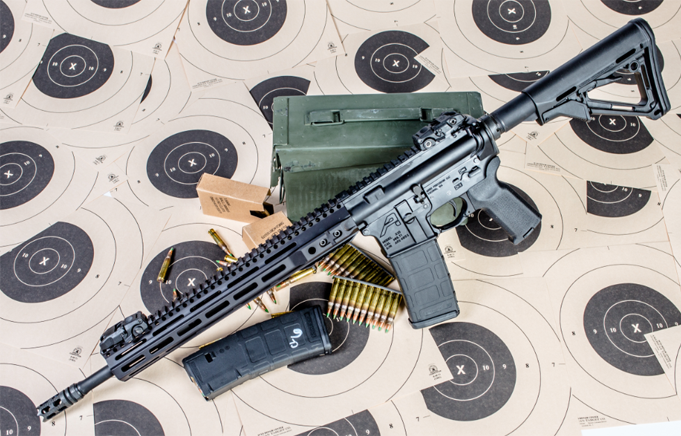











![Optic Ready vs Milled slides? [Video]](https://preparedgunowners.com/wp-content/uploads/2024/02/image-3-100x70.png)
![[Checklist] What Gear You Need To Take Pistol, Rifle & Shotgun Training Courses [Video]](https://preparedgunowners.com/wp-content/uploads/2023/07/Depositphotos_275087632_L-100x70.jpg)
![What is in Carter’s 2023 EDC? [Video]](https://preparedgunowners.com/wp-content/uploads/2023/07/Depositphotos_146856137_L-100x70.jpg)



What if you load the chamber by hand without stripping it from the magazine with the bolt?
Why would you do that? LOL
Just don’t chamber the same round twice! It’s more simple 🙂
@ Capt turbo
If it is a glock type pistol you risk damaging your extractor. The round needs to feed from the magazine.
That may have applied to your granddaddy’s boat-anchor 1911, but for modern pistols it is myth. The extractor experiences far more violent forces during firing than any hand loading practice will ever subject it to. If your extractor breaks, it isn’t going to be from dropping a round in the chamber and letting the slide go. in fact, doing so doesn’t even move the extractor to its full travel, as firing a round will. I have written to both Ruger and Glock with this very question and the answer back from both was the same i.e. “No, it will not harm your pistol’s extractor to load a round by placing it in the chamber and letting the slide forward.”
Why the picture of an AK while talking about ARs?
To keep you on your toes.
Congrats. You passed the test 🙂
It’s not an AK… it is an AR… AKs are gas piston driven semi-auto or fully auto rifles… … the firearm pictured features the direct impingement system that is common to *Most* ARs as per Eugene Stoner’s original design…
This does not apply to revolvers.
That’s true. They have their own issues.
Caleb,
This first section on handguns just goes to show yet another reason that revolvers rule. Unlimited chambering and unchamering without damage to ammo.
🙂
Lol!
Of course if the first round on my G19 goes click, I tap/rack/ and then go bang 15 more times.
And the revolver could fire all 5 shots … and I can still shoot three times as much with the first dead round 🙂
And the second section on the AR-15 just goes to show another reason that muskets rule. Unlimited chambering and unchambering without damage to ammo. 🙂
Well, you CAN rechamber the load in a muzzle loader. You have to remember to turn the ball a bit so that you don’t chamber on the same rifling marks…..(heh, heh, heh)
One of the most common problems is the springs in the mags get fatigued if they are not rested and it results in failure to feed (something Rosy O’Donnell never suffers from, LOL) when you try to fire the weapon. The guys in the range I go to told me to rotate mags every week and leave one empty. But you can leave the same round in the chamber and just deal with the mags, those bullets are not affected by repetitive loading and reloading of rounds into a mag, right? Please let me know, thanks!
That rosie o donnell comment had me cracking up!
Magazine springs don’t need to be “rested” Not sure who passed that old geezer knowledge to you. I can assure you any properly made magazine can remain loaded indefinitely with no fear of needing a “rest”. A best practice would be to unload the mags in a defensive gun once a quarter for cleaning, inspection and fresh ammo. We get guns in the store that have been loaded for decades with no ill effects other than getting dirty.
We once go in a Remington 51 from 1926 that still had 1926 ammo in the magazine! 90+ years later the little .380 loaded and fired all seven rounds perfectly. Magazine spring was cleaned and reused with no problem.
Springs do break, and do go bad, that is why we inspect our carry equipment once a quarter so we can catch the poorly made stuff before it has a chance to cause us problems. Loading and unloading your mags every week? Seems a bit much to me.
The old myth of “let the springs rest” needs to die, once and for all.
Springs are not muscles, they do not rest, they do not heal up, they either work or they do not, period. Once a spring gets enough cycles that the metal is fatigued than that spring, or maybe the whole magazine, needs to be shit-canned. Cycling is what eventually makes springs go bad, not sitting under a load they were designed to handle.
Just so everyone knows … Chuck Haggard is what we call a “subject matter expert” … if he says that’s the final word, that’s the final word.
Thanks for chiming in Chuck.
Magazine springs are generally heat treated and have been for many years. They never get fatigued as you put it tho are susceptible to corrosion. 1 1/2 years prior to Operation Just Cause(Dec 20 1989), our magazines stayed loaded, and no one ever had any issues with magazine failures to feed. Most name brand manufacturers of magazines will never have an issue. your biggest issue will be with ammunition being exposed to heat and humidity for an extended period of time. So rotate your ammo if you carry it on a regular basis. My ammo that I keep ready to go in magazines gets shot up after about 2 years ( I keep 4 basic loads in 556 and 2 of 762×39 and its stored in steel ammo cans) Have been doin this for about 6 years now and have had zero issues
Thanks for chiming in!
Once steel is “fatigued” you can’t “rest” it and make it well. Actually steel in a spring may relax or change it’s shape but “fatigued” in engineering terms usually means it has been taken through a large number of stress cycles and has failed…that is, broken. Leaving a spring compressed may relax it but it won’t fatigue it. If a spring is not properly designed, that is, it is over stressed during normal use then it probably won’t make any difference whether you keep it loaded or not – given enough time it will relax, or take a set, and then you’ll have a problem.
I work armoured, and we’re _required_ to unload at the end of the day and leave our duty sidearms at the shop. I have never seen any signs of setback on my duty ammo but I do periodically rotate the cartridges so I am not rechambering the same round day after day indefinitely.
Good on ya and just keep an eye on it, shouldn’t be a problem.
I agree with Paul.
Adding: Cycles make springs wear not compression. The fatigue happens much like when you bend a paper clip. You can only bend it so many times before it’s not useful. Obviously spring steel can withstand many cycles but can not be rejuvenated by release of tension.
Magazines are also a consumable like ammunition. Toss it in the trash and drop the $12-15 for another.
Good read, thank you!
Frank
You betcha, consumables!
This makes no sense:
1.) A loaded gun is not necessarily more safe than an unloaded gun
Sure it does … But you have to read the article to understand why it makes sense 🙂
1st lock your slide/bolt back, load a single round through the ejection port into the chamber. Then insert a full magazine. Now you are at FULL capacity and that single round won’t get the bullet pushed back. The magazine spring issue has been proven false, you can leave them loaded.
When I was in the Marines, everyone we returned to our patrol base we had to return our weapons to condition 3. So obviously, every time we left had to go to condit in 1 with our rifles. I cannot say misfires did not occur but they did not occur at such a high rate due to the constant chamber ing and re-chamber ing of rounds. My experience with the cheap government ammunition is that it is actually fairly reliable to have endured repeated chamber ing. I can only assume that high quality ammunition wound be even more durable to this type of repeated use.
I’m curious Sean, because in the article itself I reposted the experience of a soldier having the problem with re-chambered rounds …
How often did you shoot all the ammo you carried? Could be you shot up all the abused ammo on a regular schedule?
Agreed. Have seen most of these over the years. My usual-carry Kimber is very tight, sensitive to extractor marks and like some others I have, might not completely lock up with a rechambered round. Usual drill for me is finger press the slide every time I chamber anything. When I do empty the chamber, that round goes in the practice box. Reminding myself here too I need to visually inspect all the new rounds I put in the magazines.
I carry with a thumb-strap holster. When I go into the County building the holster etc. all goes in the security box. No fiddling around and possible AD is my practice.
Tried firing a LOT of dented primer rounds over the years, about 1% went on the second try, half of those leave a bullet in the barrel. So much for that double-action for extra tries theory.
About 100 pound so powder down the road, no idea how many round of factory over the years. !0,000 round on the range one year I counted. A few factory primer failures in all those years–one did not have an anvil.
Thanks for chiming in Richard. That’s a good data point.
Very true.
I oversee a maintenance of a LE patrol rifle program with over 400 rifles. The photo at the link below is one I took of an officers rifle during an inspection who did not follow this advice. The bullet was pushed back to far into the case from repeated chambering, the powder spilled into the chamber. The bolt would not lock, rendering the rifle inoperable.
I have also seen the dead primers DocGKR mentions. Dean Caputo, who trained the armorer trainers as Colt for a number of years has long recommended not rechambering duty rounds. Practice ammo on the range, a couple times is no big deal, but I would not trust my life to a re-chambered round.
http://progunfighter.com/dont-chamber-ar-15-duty-rounds-multiple-times/
Holy Moly!
That’s a REALLY bad example. Wow.
That is your article Alan?
Yes, the one I linked to. Before we had an individual issue / own rifle program, I would find rounds that bad with relative frequency.
Yeah, this is total BS. I would have blown myself up several hundred times over by now and needless to say police and military training would be completely different if this were true as well. A bullet is meant to be chambered and unchamber, and a gun is meant to chamber and unchamber as well. I don’t know where this info came from, but it’s completely inaccurate. Unless something is wrong with the gun or round itself rechambering a round that was chambered once before will do nothing.
Steven,
You are correct when you say this “… rechambering a round that was chambered once before will do nothing.” until it doesn’t “do nothing”.
It should be fine once chambered, twice chambered, maybe even three times …
Key word is “should”.
But why not stick to a strict SOP that completely eliminates any possibility of bullet setback or primer damage? If it’s been chambered more than once (aka twice) put it in the range pile of practice ammo. Simple.
p.s. As per the quoted email, military training and police SOP’s have been changed in light of this knowledge. Whether you take it into consideration or not is your choice.
That’s exactly the point. It’s easiest to discard a round when it has that dimple in the primer, because it is a clear visible indicator that the round has been chambered. Is your life worth 75 cents to replace a duty round every now and then? Like you said, re-chambering once or twice isn’t a big deal, but if a round gets mixed up and used over and over again, well, follow that link I posted above….
And it is HILARIOUS to think that if something were true it means that LE and military training would be different. I train and certify LE firearms instructors from agencies all over the state. You wouldn’t believe the jacked up things I see guys who are going to be INSTRUCTORS bringing in through our classes.
Another issue with re-chambering the same round is that the extractor keeps going over the extractor groove on the cartridge rim . Over a period of repetitions the rim gets worn/damaged and you end up with a single shot . In a lot of instances it requires the spent cartridge to be knocked out from the muzzle end with a rod .
After hearing several times from Tom Givens the story about the Winchester report about the 2011 GWINETT COUNTY POLICE DEPARTMENT incident (police officer had to use his duty gun in a fight but the first round did not go off) I wanted to ask the folks at SPEER (my carry ammunition of choice – SPEER Gold Dot) if they also advise not chambering the same round repeatedly. This is what I got back from them:
“Ivan: I’m not familiar with the Winchester report on primer failure. I would tell you that repeated chambering is not advised. After a few of times in and out of the chamber, replace the round in the box and have an enjoyable trip to the range with them when you have a quantity to shoot, it will afford you the ability to practice with what you carry.” – C.G., Sr. Technical Coordinator, Alliant/Blazer/CCI/Speer Bullets & Ammunition
Interesting!
[…] […]
I agree is most part of everything said and when it refers to military ammo that’s loaded and unloaded using the same single round have yet to see one that did not fire (9MM) normally duty ammo is issued and stuck loaded in magazines sometimes for years in reference to an article about dislodging some of the primer powder I have since rotated annually all duty ammo over to proficiency ammo all work when used. As for the 5.56mm pushback into the case again I be seen this plenty on the range and will drop this into a rifle and it fires with no over pressure. I would agree still that repeated and over use of one round on top would have issues at some point in time. I go through roughly 60,000 rounds of 5.56mm and have not seen any issues as of yet 1994-present) but would agree that with in reason these should be turned in after so many load and unloads on weapons.
Thanks for chiming in!
My dad had a Remington 30-06 simi automatic. One day he rechambered a round an it came apart and dumped powder in the action. Even wirh repeated cleanings, that gun was never the same. He got rid of it. In another case, I had a good friend that wanted to go elk hunting with us an bought a Ruger bolt action 7mm mag. He chambered a round and the gun fired. We called Ruger an they sent us a recall fix. Opening morning I put him on a spot I saw two elk fighting during deer season. I walk around the corner an his rifle fires. I figured another chambering fire. When I got back to him he graps me an swings me around like a ragdoll, an points to a six by six in the ground. “I can’t believe my best friend gave me his elk spot he says!”
After 55 years of reloading and shooting all manner firearms I have tested the effects of bullet setback on rifles and pressure in bolt action rifles only. Using the .222 as a test rifle. I have set bullets back as much as one quarter inch before contact with the barrels rifling. This could be considered a lot of freeboor and it never caused a major pressure issue. All weatherby hunting rifles also use large amounts of freebore to increase velocity today. I know that the rifles you are discussing here are different in operation but I would hope that given their purpose that they would be more acceptable to wider variations in cartartage to cartatrtage issues. It bothers me that a true battle. Rifle would allow even a mild primer strike while bringing it into battery as this would seem to be a recipe for disaster begging for a misfire. As I,’ve never served and have no idea what it’s like under fire I firmly believe that our men at arms should only be given the best equipment that can be built. It is my opinion that the .223 has never been more than a varmint cartridge when a cartridge .30 calibre is far superior in every way. Even the 6.5 or 7 mms are superior in every way. However I have now moved well outside of my expertise and shall leave these arguments up to those who actually stand in harm’s way. Thanks for an old frats two bits…
I am new to gun ownership and use. I’m glad the internet can still bring up something useful on a random search; thank you for posting this! What some folks take for granted; lessons they may have learned decades ago about firearms is completely new to people like me who are eager to (and need to) learn. Again, thank you.
Thank you and good on you for reading and taking the time to learn! Keep it up!
Comments are closed.